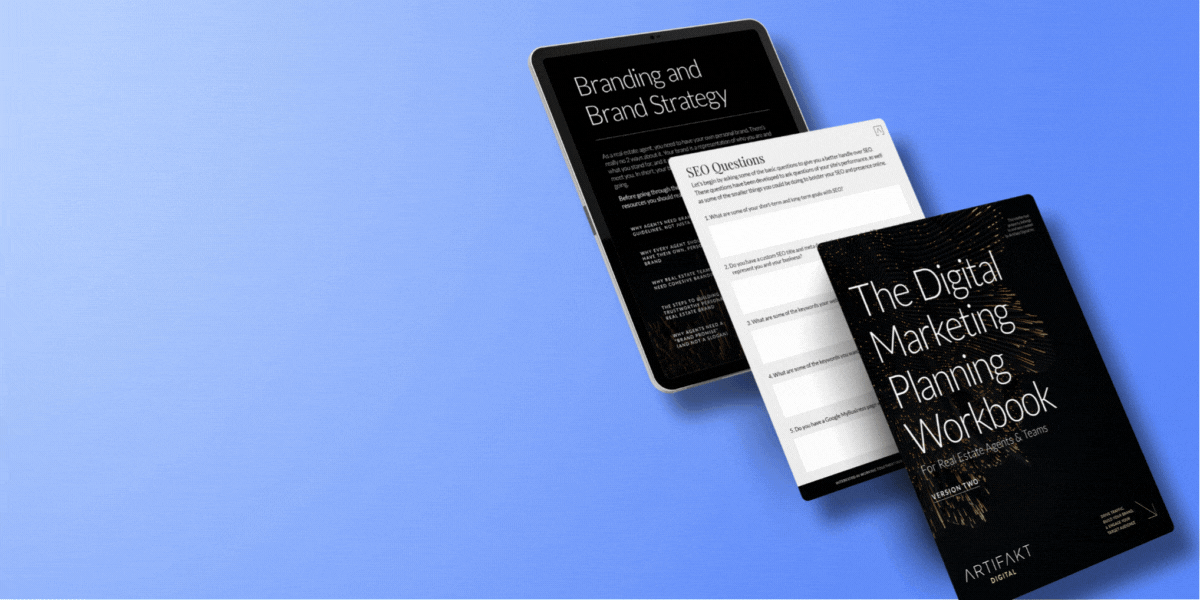Measuring the Success of Your Digital Strategy Through Engagement

There’s a lot of different ways to measure the success of your overall digital strategy, and in most cases, success will be defined in different ways by different people. For example some people might define the success of their digital strategy by:
- Getting compliments about how their branding, marketing, and website looks, feels, and functions.
- Getting found online consistently for the terms relevant to their business and target audience.
- Getting a lot of high-quality leads through form completions, phone clicks, and email clicks.
- Or maybe something else, or even all of the above.
But there’s a specific, more measurable metric that can help you determine the overall success, and general health, of your digital strategy, or even the overall success of individual campaigns, posts, and pages – and that’s your engagement rate.
Finding your engagement rate means first understanding what an engaged session is. Specifically, Google Analytics 4 considers an engaged session to be a session where someone does any one of the following on your website:
- Stays longer than 10 seconds,
- Clicks to additional page (has 2+ page views),
- Or converts by completing a key event.
You have probably heard the term “bounce rate” before, which measures the opposite metric of engagement rate. Bounce rate is the metric of unengaged traffic, while engagement rate is the metric of engaged traffic. As part of the move to Google Analytics 4, Google focuses more on the engagement rate measurement (you can learn more about that right here).
Engagement rate is the percentage of engaged sessions you have to a post, page, or your overall website. It’s measured by taking the number of engaged sessions, dividing it by the total number of sessions, and multiplying the answer by 100. For example, if in a 30 day period, you had 5000 engaged sessions, and 12000 total sessions (5000 / 12000 x 100), then your engagement rate would be: 41.66%.
★ To find your engagement metrics in Google Analytics 4, go to Reports > Engagement > Overview, and you’ll see the pre-made report that gives you a high-level look at your engagement metrics.
So, what’s a good engagement rate to have? Although it “depends” and varies from agent to agent and digital strategy to digital strategy, overall, you can consider 45-60% to be a good engagement rate. But a more effective website that consistently gets high-quality leads will often be a lot higher in the 75-90% range.
A website with a higher engagement is often a better performing website, meaning, it gets more high-quality leads, more targeted traffic, and better overall results.
Why? Because engagement is a measurement of overall success. It’s a good general measurement of how useful your target audience finds your content strategy, your website, and your overall digital strategy. Simply put, it means that when someone visited your website, they found what they were looking for, liked what they saw, and found it useful (which means they’re more likely to turn into a contact, then a lead, and ultimately, a deal).
★ Want to improve your engagement rate? Have a look at these posts:
- How (and Why) to Audit Your Real Estate Website’s Content
- Optimizing Your Content for Humans (And Not Just for Search Engines)
- Building and Managing a Real Estate Content Lifecycle Plan
High engagement rate metrics can also contribute to a more successful SEO strategy. For example, let’s say someone searches for “how to sell my parent’s house”. If they click the first result, and it happens to be an ugly website, with incorrect information, that’s poorly formatted and hard to read, they’re going to click the back button in their browser (and, it hasn’t created an engaged session)…
Then, they’re probably going to click the next search result. And if that result brings them to a well designed website, that has solid information, that answers the question, and they stay for a while or click a link to some related content, then that creates an engaged session.
When it comes to SEO, that also tells Google that the first example is not a good result for that search, while the second example is, because Google attributes high engagement metrics with a well-built, well-liked, useful website.
★ Want to learn more about building a successful SEO strategy? Have a look at these posts:
- How to Do Keyword Research for Your Real Estate SEO Strategy
- Understanding SEO Titles and Meta-Descriptions on Your Real Estate Website
- The Three Components of a Successful Real Estate SEO Strategy
- Building a Successful Real Estate Off-Page SEO Strategy
- Why Building Trust is a Key Part of a Successful SEO Strategy
Looking at your engagement metrics, whether that’s by post, by traffic source, or even as a whole, is a good way to tell if your strategy is performing well, and that you’re bringing in the right people for the right reasons.
Because at the end of the day, getting a lot of traffic to your website that isn’t within your target audience and leaves quickly isn’t very useful, no matter how much of it you get; but by building a concise, targeted website and focusing on providing value to your audience, you’ll be bringing in more engaged, more high-quality traffic that’s more likely to reach out when they need help with their next transaction.
Want to plan your digital marketing strategy on your own, and set your business up for success? Download our workbook: ‘The Digital Marketing Planning Workbook’. It’s a self-guided, interactive workbook, where you answer questions about your marketing goals, brand and content strategy, lead generation plan, and a lot more, to get insight into the effectiveness of your overall digital marketing plan. And, it’s free to download.




















